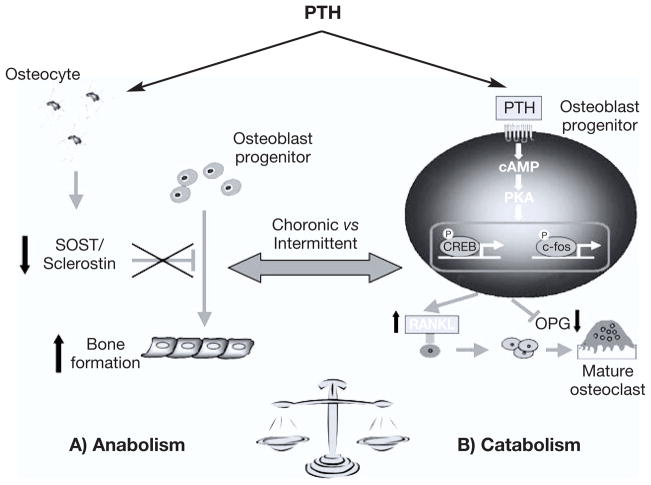Fig. 5.
Anabolic and catabolic pathways of PTH on the skeleton. A) PTH decreases SOST/sclerostin expression in osteocytes. Sclerostin functions as a negative regulator of bone formation, and its downregulation by PTH contributes for the PTH-induced osteoanabolism. B) PTH favors bone resorption, mostly by increasing receptor activator of nuclear factor kappa-B ligand (RANKL) and decreasing osteoprotegerin (OPG) expression in osteoblasts, which ultimately leads to an increase in osteoclast formation and activity.

